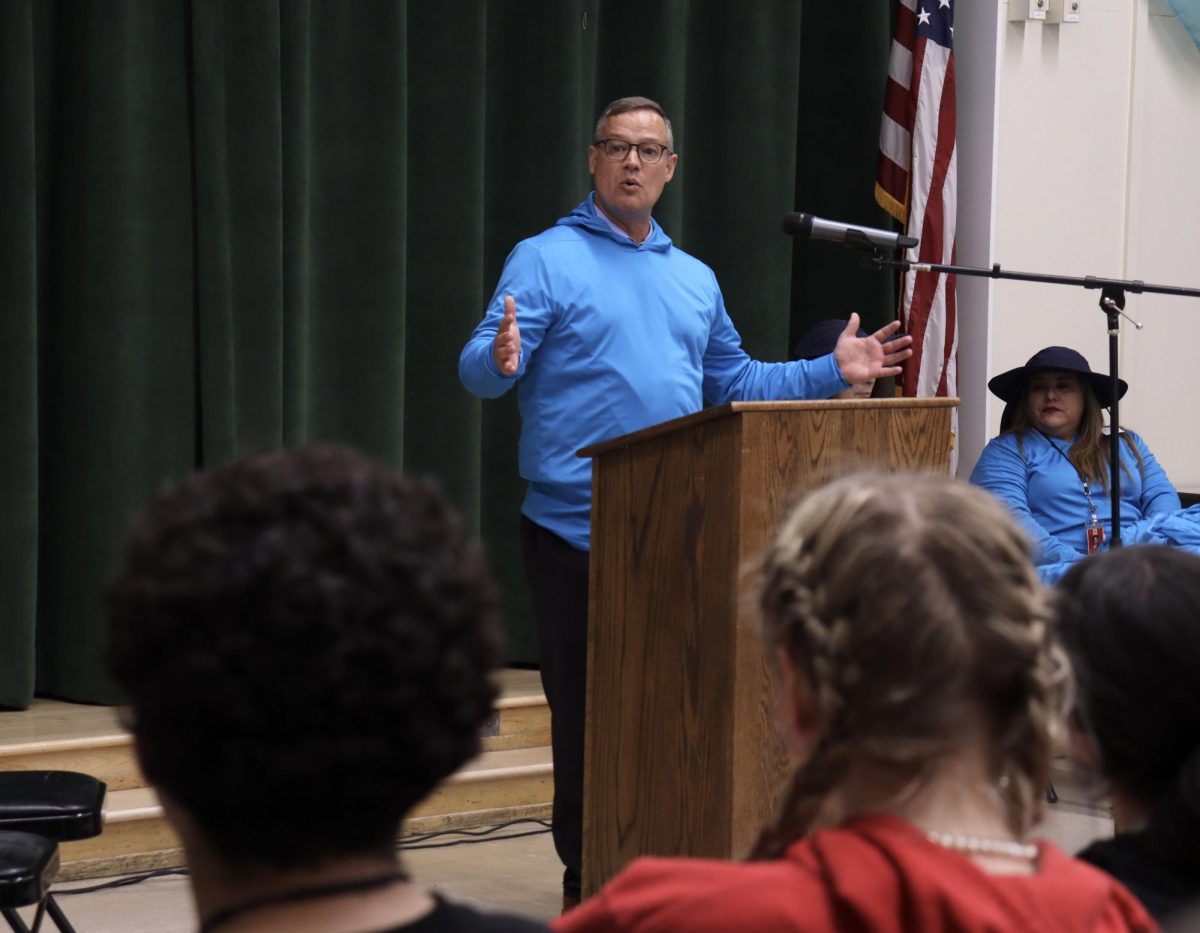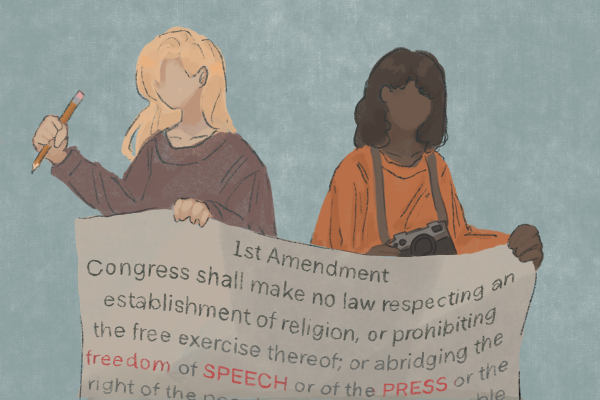Students accepted through preferred gender pronouns
A student is wearing a shirt that holds the symbol for gender neutrality and multi-gender, while surrounded by preferred gender pronouns and the contradiction of others.
September 22, 2017
No pronoun belongs to any certain sex, meaning pronouns aren’t assigned to or just for males or females. In short, all pronouns are gender neutral.
This belief has gained popularity as more schools and workplaces try to meet the needs of the genderqueer and transgender community. This year, our school has become more open in asking students their preferred gender pronoun as to avoid misunderstandings and because it would be a disservice to some students otherwise.
“It is a reflection of the needs of our students,” Magnet Coordinator Nicole Bootel said. ”We would like to treat people the way they want to be treated. I think that people want to be referred to in a manner that’s comfortable to them. It’s a simple enough adjustment.”
These changes are the result of recent campaigns for gender-neutral bathrooms. DPMHS is ahead of the curve, having these accommodations in place for four years now ahead of any other high school in LAUSD.
Gender identity for most people is the same as their biological sex or their gender expression fits enough into traditional norms that people can correctly assume their pronouns are either “he” or “she.” However, for those that don’t fall into this category, assumptions can be considered rude and limiting.
“Pronouns are an unavoidable fact of the English language, and people deserve the common decency of being referred to in a way that reflects who they are and how they identify,” said Tatiana Fiermonte, a representative of the LGBT National Help Center, in an interview. “It isn’t a question of respect or kindness, it is a minimum standard of decency.”
Other pronouns like ‘they’, ‘ve’, ‘ze’ and ‘xe’ exist, all are gender neutral pronouns the LGBT community approves of and utilizes so it is courteous to practice asking someone how they identify to avoid confusion.
“You can’t always tell someone’s gender or what they prefer to be called by appearances so by asking you put the ball in their court,”said an anonymous representative of Equality California, an LGBTQ organization in Los Angeles, in an interview. “Support people by dignifying how they perceive themselves and their own gender. Be polite and try to empathize, imagine you were in someone else’s shoes and people judged you by how you look.”
By not jumping to conclusions, you’re modeling respectful pronoun use for others and promoting tolerance. The use of preferred gender pronouns in schools is progressive and a great way to promote inclusion and support students.
“The ideal method is to create an environment where people feel comfortable declaring for themselves how they identify,” Fiermonte said.” And maybe ask globally rather than asking specific individuals. It creates an atmosphere that is inherently more welcoming and understanding of the diverse experiences of gender people have.”
It’s a privilege to not have to worry about which pronoun someone is going to use for you based on how they perceive your gender. If you have this privilege, yet fail to respect someone else’s identity, you’re being oppressive.
“You should correct yourself when you misgender someone on purpose or not,” an anonymous freshman said. ”Transgender people deserve respect just as any other human being. PGPs are important because trans people need a voice to be heard; because we feel disrespected, invalidated, and dismissed, when they’re not used.”



















